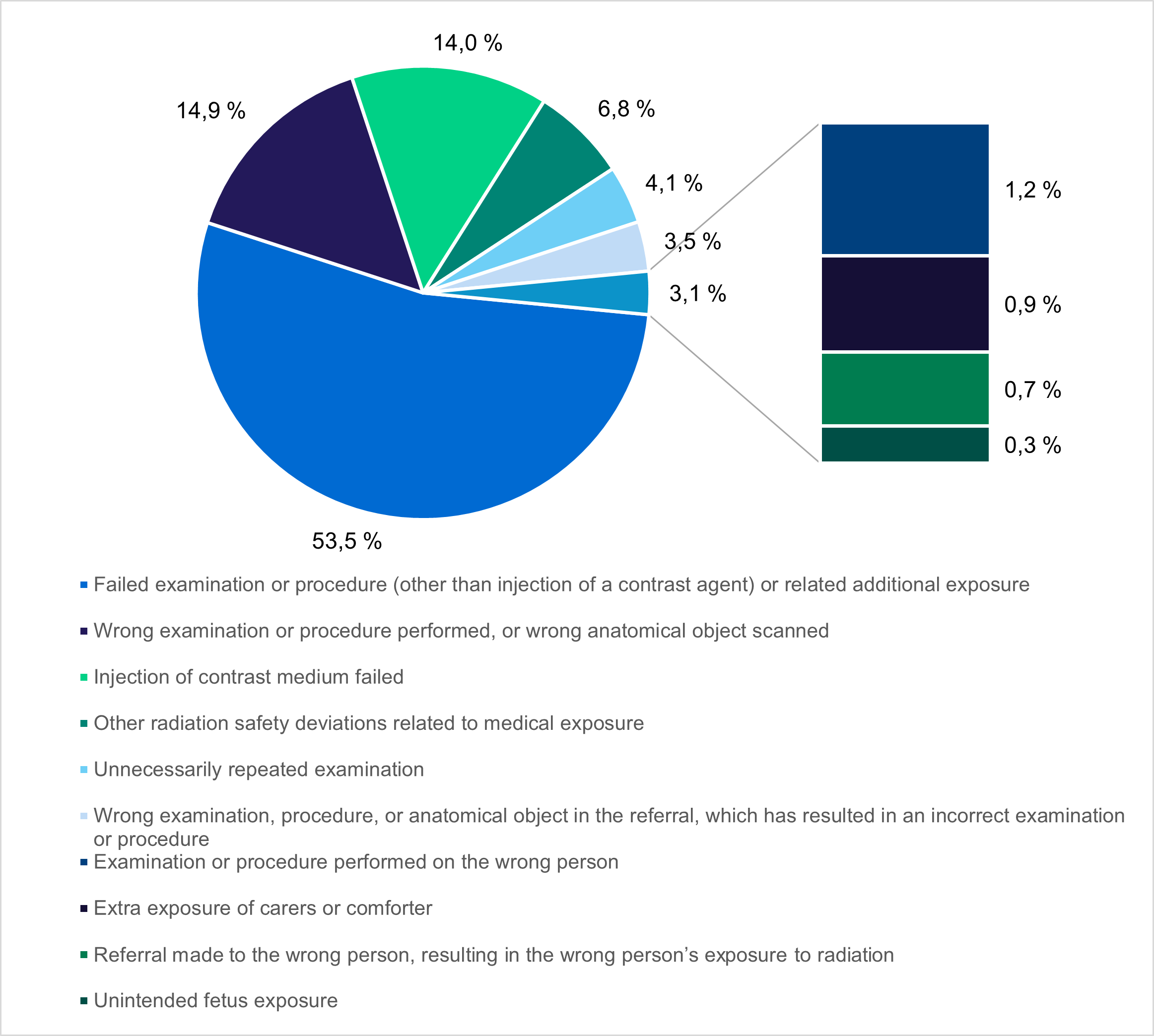Analysis of minor radiation safety deviations
In 2024, the Radiation and Nuclear Safety Authority received slightly over 2,000 notifications from health care units conducting X-ray examinations concerning cases in which the use of radiation in X-ray examinations caused damage or near-miss situations. The vast majority of these cases involve deviations of minor significance for safety.
The Radiation and Nuclear Safety Authority (STUK) supervises the use of radiation in health care, and the processing of radiation safety deviation notifications that it receives is part of this regulatory control. The number of deviations and near misses in X-ray practices reported to STUK has been approximately 2,000 per year in recent years. This means approximately one deviation is reported for every 2,500 examinations.
In recent years, the number of notifications concerning radiation safety deviations of minor significance for safety has increased, and this figure has increased at a faster rate than the number of examinations. During the past five years, STUK has received a report on 1,500-2,000 such deviations each year. The number of more serious deviations that must be reported to STUK without delay has not increased. STUK receives approximately 20 notifications per year about such cases. Overall, X-ray examinations are safe in Finland.
STUK changed the practice for reporting radiation safety deviations in 2015. Since that time, X-ray undertakings have been able to report minor deviations in summarized format once a year. During the past three years, STUK’s has under itsown regulatory control emphasised the importance of processing deviations at the places of use. This may also have affected the reporting activity.
STUK’s view is that the undertakings conducting X-ray examinations are quite conscientious about reporting the observed radiation safety deviations. The fact that deviations are detected in organisations and these observations are processed and reported to STUK demonstrates that the organisations have a good safety culture.
The relative numbers of radiation safety deviation notifications vary quite clearly depending on the size and type of organisation (private and public). Based on this breakdown, it can be said that private undertakings report approximately 50% more deviations in relation to the number of examinations than public operators. Similarly, the number of deviations reported by small operators seems to be relatively high in comparison to large operators.


